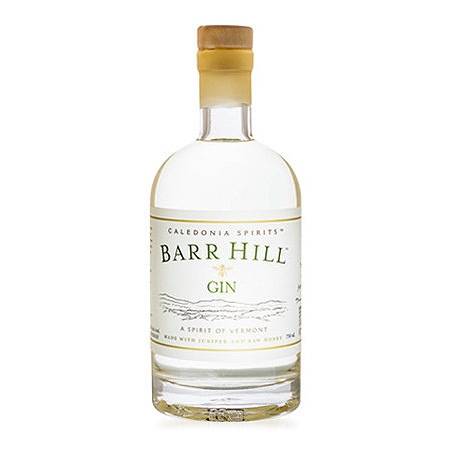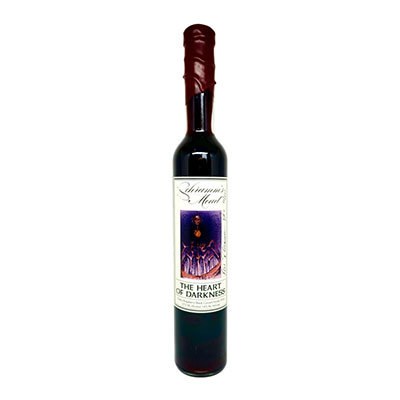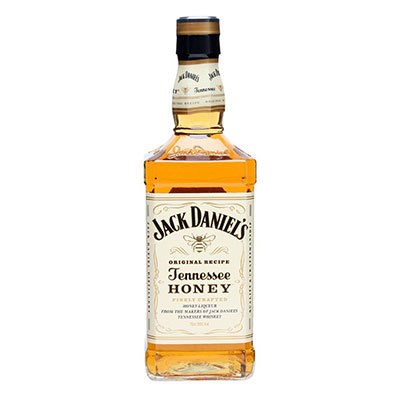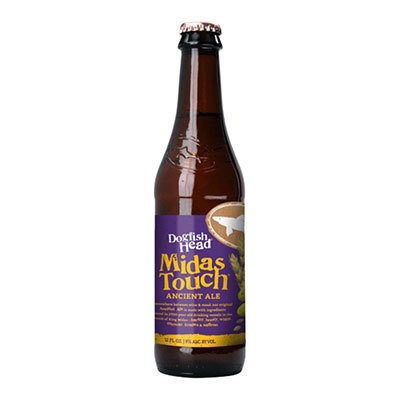The National Honey Board is proud to announce the Honey20, a list of made with honey alcoholic beverages that have impacted our drinking experiences for the last 200+ years. View past installments of the Honey20.
We made it! The top 5 most influential made with honey alcoholic beverages! Fittingly, the top five include entries from the spirits, beer and mead world. Each of these beverages have made an impact on the use of honey in the alcohol industry. Some have impacted mass consumer appeal, while others have impacted fellow craftsmen to push honey’s use further. Regardless, they all are influential in their own manner. Congrats to all of our Honey20 honorees!
If you have any comments about our selections (we know you will), we’d love to hear them at [email protected].
#5. Barr Hill Gin
Caledonia Spirits, Montpelier, Vermont

In deliberations around the creation of the Honey20, one of our initial rules was that a distiller,
brewer or meadmaker couldn’t have two products on the list. However, when it came down to it,
it proved impossible for us to adhere to the rule when it came to Caledonia Spirits. The
distillery’s Barr Hill Vodka featured at #10, and its gin comes in at #5. Barr Hill Gin manages to
be perfectly balanced and exquisitely complex at the same time. In an era when gin makers boast
about the number of botanical ingredients in their formula, Barr Hill Gin takes simplicity to
another level as a base spirit of corn enhanced with just two botanicals: honey and juniper.
That’s it, three ingredients to create a complex spirit. In the gin, honey is used at the finish to
give the gin depth and the essence of all the botanicals the honey bees visited as they foraged for
nectar.
When so much of your product’s flavor is based on honey, it’s not surprising that the gin’s
origins come from a beekeeper, Todd Hardie, and a distiller, Ryan Christianson.
One of the most amazing things about Barr Hill Gin is how the distillery embraces each honey
harvest as the opportunity to express seasonality. Caledonia eschews the rigid consistency of
most distilleries and embraces the true nature and uniqueness of where the bees forage for nectar.
With every batch, new and subtle flavor characteristics take shape, but due to expert distillation,
the finished product is always undoubtedly Barr Hill Gin.
#4. Heart of Darkness
Schramm’s Mead, Ferndale, Michigan

Ask a craft beer drinker to name a mead they would like to have in their collection, and you’ll most likely get one answer: Heart of Darkness from Schramm’s Mead. This hauntingly complex, ethereal and immensely pleasurable mead is the epitome of the melomel style and one of the most coveted meads by beer, mead and wine drinkers alike. The concept for the mead dates back to 1998, and there were various iterations of the fruited mead produced by Ken Schramm for b.Nektar Meadery, also located in Ferndale, Michigan. The first batch released by Schramm’s Mead was shortly after they opened in 2013. The buzz was immediate, and the search for bottles spread quickly throughout the beer and mead world.
Today, the company is on batch #8, which will be limited to about 20 cases. The small-scale production of Heart of Darkness is due to Ken’s dedication to using only hand-harvested estate grown fruit from the Schramm family. In peak agricultural years, Schramm’s is able to make 50 cases of Heart of Darkness. If late frosts hit, the company may not be able to produce a batch at all. Despite the intense importance of fruit in Heart of Darkness, honey shares equal billing, accounting for 70% of the fermentable sugars in the mead. Each year, the meadery selects honey that will pair perfectly with the characteristics of the fruit harvest. In past batches, Heart of Darkness has used honey from anise hyssop plantings in Michigan, orange blossoms in California and Florida, and Northwest raspberry blossoms. Ken’s intense dedication to fruit and honey has led to the creation of one of the best meads in the world. Find it, and share a bottle with us!
#3. Honey Brown
J.W. Dundee, Genesee Brewing Company, Rochester, New York

From the extremely rare Heart of Darkness mead to the extremely common Honey Brown lager — both influential, but for different reasons. Honey Brown is one of the O.G.’s of honey beer in the United States. Introduced in 1994, the beer has been a constant in supermarkets, bars, convenience stores and college parties in the United States for the last 25 years. Think about that. Outside of traditional, mainstream domestic offerings, what “niche” beer has had the commercial staying power of Honey Brown?
When it was first launched, the beer landscape was vastly different than today, and Honey Brown was originally positioned to compete in the premium beer category. It was a hit from the start, garnering a 2004 Gold Medal and 2000 Silver Medal in the Specialty Honey Lagers or Ales category at the World Beer Cup. By 2006, the beer’s sales were increasing upward of 300% year-over-year, and the beer had found a fanbase beyond premium drinkers. The key to Honey Brown’s success is the honey. The Manitoba-grown white clover honey used in the brew imparts a hint of sweetness and gives the beer a heavier body than other lagers at the time of its release.
The beer industry has changed immensely since Honey Brown was first introduced in 1994, but one constant has been its availability. Honey Brown’s staying power and drinkability have introduced hundreds of thousands of beer drinkers to honey beer.
#2. Tennessee Honey
Jack Daniels, Lynchburg, Tennessee

It wasn’t the first honey whiskey to hit the market (see #6 on the Honey20), but it’s definitely the biggest and most influential. It’s also pretty delicious, but when you start with a base spirit of Old No. 7 Tennessee Whiskey, that’s to be expected. To the world-famous whiskey, the distillery adds a honey liqueur, creating a smooth and slightly sweet whiskey liqueur that sells more than one million cases per year globally. In fact, Tennessee Honey was the first flavored whiskey to reach the million case benchmark, a feat it accomplished in 2014, three short years after its 2011 introduction. Today, sales are still growing.
Tennessee Honey is a whiskey liqueur built for mass-market appeal. But, it’s also respected by purists that often malign the flavored category. It’s unmistakenly Jack Daniels, but with a more approachable drinking experience. The honey appears in both the nose and finish of Tennessee Honey. And, unlike other entries into the flavored spirits market, you can taste that the honey is the real deal here, not an artificially flavored product.
It’s likely the most consumed alcoholic beverage with honey in the world and why the spirit garnered the #2 spot on the Honey20.
#1. Midas Touch
Dogfish Head, Milton, Delaware

“Kind of a hybrid of a mead, a wine, and a beer.” Sam Caligione, Founder of Dogfish Head Craft Brewery
“The judges were unanimous in their opinion that Midas Touch is unique and intriguing, but all felt it strayed a bit too far from being ‘beer.’” Beer Connoisseur review of Midas Touch
In today’s craft beer industry, it’s impossible to throw a stone in a bottle shop without hitting a heavily-fruited beer/wine hybrid. Twenty-one years ago, Dogfish Head stood alone in the “extreme” beer category, and Midas Touch served as a prescient pioneer of the type of brewing innovation now commonplace, where no ingredient (or candy bar) is too taboo for brewing.
It’s rather interesting to frame Midas Touch as innovative and ahead of its time based on its inspiration: molecular evidence found in a 2,700-year-old Turkish tomb of King Midas. However, that’s what makes Midas Touch so influential. Despite its “ancient ale” positioning, the brew helped usher in the concept of extreme beer recipes that renounced traditional German purity laws making any ingredients outside of water, barley, and hops forbidden. Midas Touch showed that you can move the beer industry forward by looking back in time when honey was the main fermentable sugar of all alcoholic beverages.
Honey’s role in Midas Touch is unmistakable, from the aroma to the sweet flavor. However, the
honey also lightens the body and increases the drinkability of the beer, as well as serving as the
the glue that pulls together the other core ingredients in the recipe: barley, white Muscat grapes and
saffron.
Midas Touch served as the debut beer in Dogfish Head’s innovative ancient ales series, which it
developed with the help of molecular archaeologist Dr. Patrick McGovern. Other beers in the
series, including Chateau Jiahi and TheObroma, each of which showcased the versatility of
honey in alcoholic beverages.
Dogfish Head managed to pull off something spectacular with the release of Midas Touch in
1999. It paid tribute to ancient traditions while simultaneously opening the door for brewers to
take chances with non-traditional ingredients. Even more impressive is the beer’s staying power.
It’s still produced year-round today and available where Dogfish Head beers are sold, which is
quite a few places.

